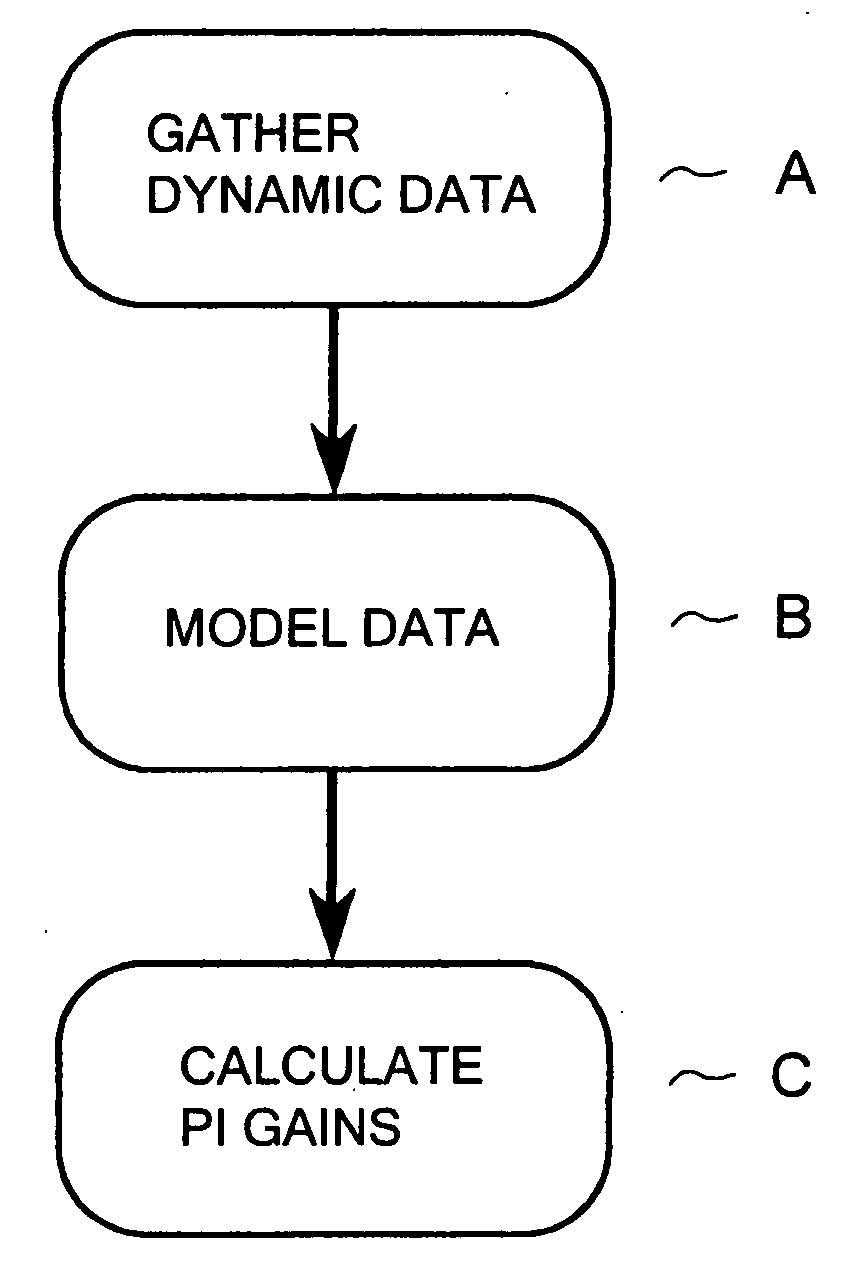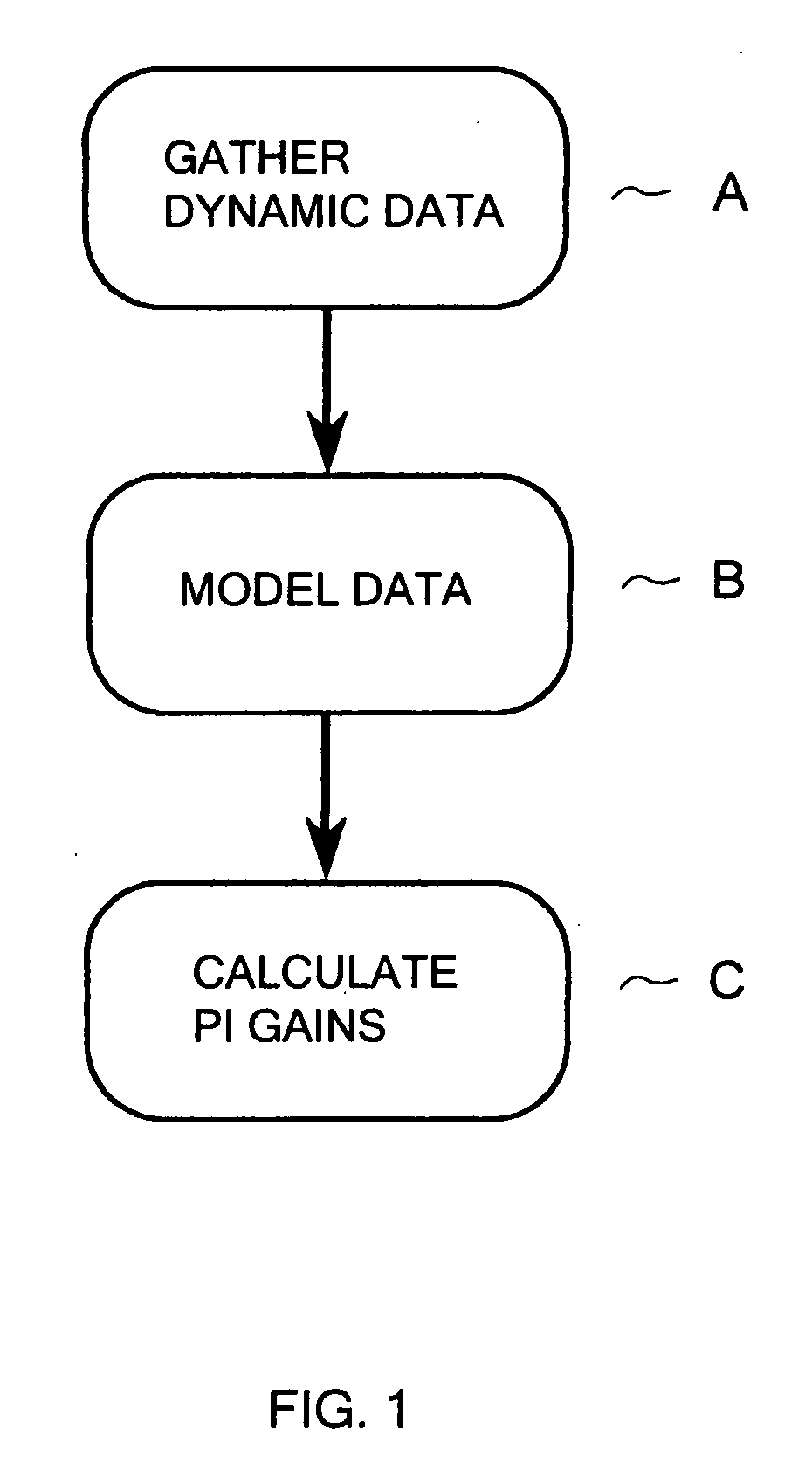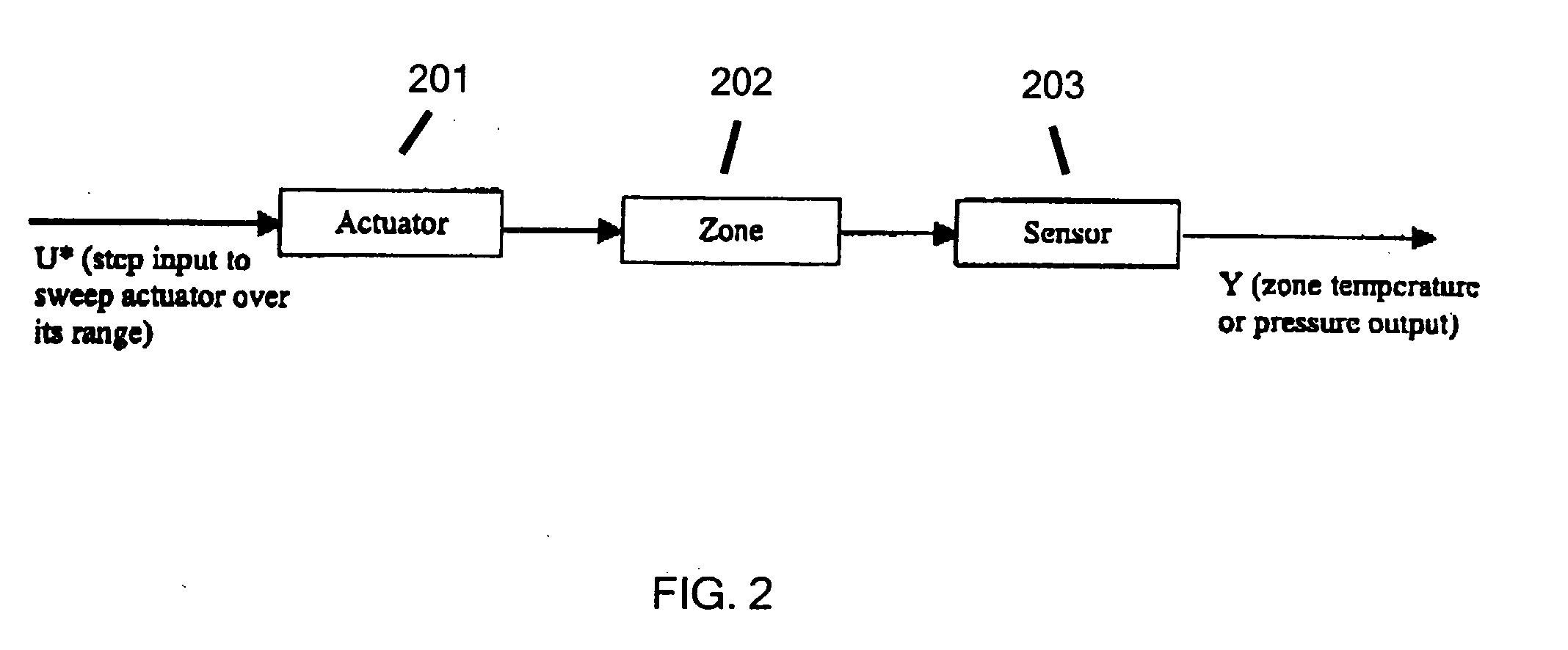Adaptive algorithm for setting the proportional integral (pi) gains in lag-dominated hvacr systems
a technology of proportional integrals and adaptive algorithms, applied in the field of system and method to calculate pi gain parameters in lag-dominated hvacr systems, can solve the problems of delay, automatic or manual adjustment system operating inefficiently, and change in the temperature of air flow at the ven
- Summary
- Abstract
- Description
- Claims
- Application Information
AI Technical Summary
Benefits of technology
Problems solved by technology
Method used
Image
Examples
Embodiment Construction
[0016]The steps of the method to determine the PI settings based on actual measurements of the performance of the installed HVAC components are shown in FIG. 1. In block A, dynamic data is gathered, while the equipment is in its commissioning phase. In this phase the actuator is swept over its full range to identify the high and low limits of position and the step response dynamics. Useful dynamic data includes time, valve position, and sensed temperature. In block B, The data is modeled using least square system identification (“LSID”) or a similar identification method. The data can generally be modeled as a first order transfer function with time delay. In block C, proportional-integral (PI) gain constants are calculated based on the model parameters and a desired damping ratio using the Root Locus method. While most installations can be modeled by first order transfer functions, it should be noted that the method can be extended to higher order functions.
[0017]Gathering Dynamic ...
PUM
 Login to View More
Login to View More Abstract
Description
Claims
Application Information
 Login to View More
Login to View More - R&D
- Intellectual Property
- Life Sciences
- Materials
- Tech Scout
- Unparalleled Data Quality
- Higher Quality Content
- 60% Fewer Hallucinations
Browse by: Latest US Patents, China's latest patents, Technical Efficacy Thesaurus, Application Domain, Technology Topic, Popular Technical Reports.
© 2025 PatSnap. All rights reserved.Legal|Privacy policy|Modern Slavery Act Transparency Statement|Sitemap|About US| Contact US: help@patsnap.com



